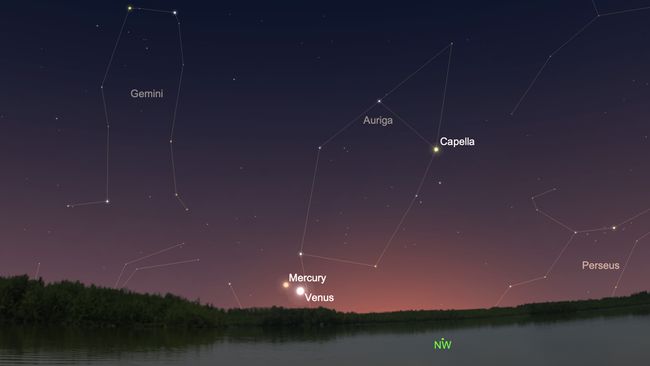This smallest and fastest-moving planet (only 1.4 times wider than our moon) orbits the sun just a little over four times per year (4.15 time to be precise), but from our moving viewpoint on Earth it appears to go around only 3.15 times. On average, each year it makes about 3.5 swings into the morning sky and as many into the evening. But each apparition into either the morning or evening sky is markedly different thanks to its very eccentric orbit and the various viewing angles from which we can see it.
On May 4, Mercury was at superior conjunction and passed directly behind the disk of the sun from Earth's perspective, moving from west to east (or from right to left), after which it entered the evening sky. We now can see it, shining almost as brightly as Sirius, the brightest star in Earth's night sky, shining directly below Venus.
And come Thursday (May 21), the two planets will come closest together, like two ships passing in the night (or in this case, twilight). About 45 minutes after sunset, look low near the west-northwest horizon. Glaring Venus will of course, stand out against the twilight sky. Mercury will be 1.1 degrees below and slightly to the left. Although shining very bright in its own right, Mercury glows with only 4% the radiance of Venus. Binoculars will make sighting Mercury easy, although you should also be able to pick it out with your naked eye.



No comments:
Post a Comment